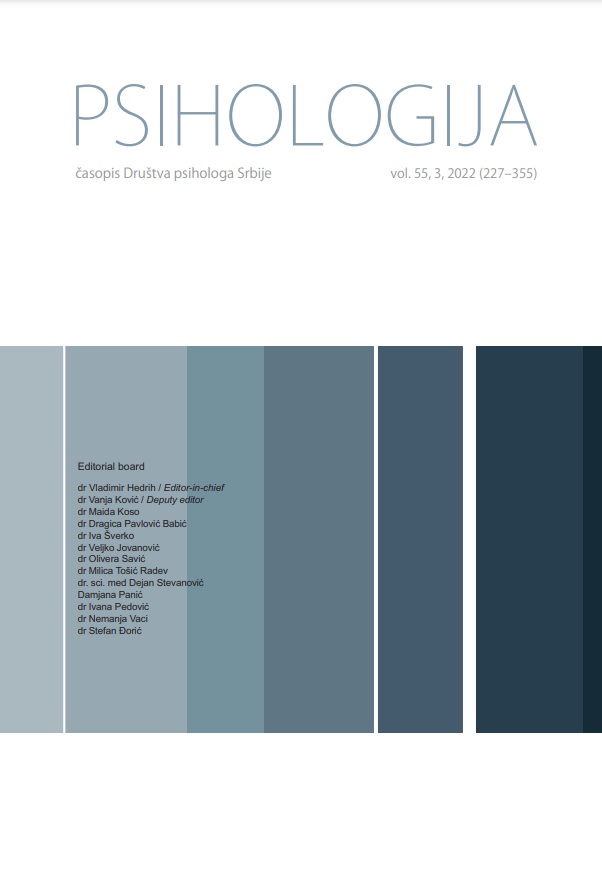The light and the dark side of social media use: Depression, anxiety, and eating attitudes among adolescents
The light and the dark side of social media use: Depression, anxiety, and eating attitudes among adolescents
Author(s): Alois Gherguţ, Alexandra Maftei, Ana Nicoleta GrigoreSubject(s): Social psychology and group interaction, Developmental Psychology, Clinical psychology
Published by: Društvo psihologa Srbije
Keywords: adolescents;eating attitude;eating disorder;social networking;depression;anxiety;
Summary/Abstract: In the current study, we explored the links between social networking activity, eating attitudes (EA), anxiety, and depression among adolescents. We used a cross-sectional design. Our sample consisted of 532 males and females, aged 12 to 15 (M = 13.55, SD = 0.90), from the Eastern side of Romania. We analyzed our data using three different pathways to explore these relationships on the overall sample, as well as the at-risk for eating disorders (ED) group (n = 134), and the non-ED-risk (n = 398) samples. The results suggested that depressive and anxiety symptoms partially mediated the relationship between social networking and eating attitudes in the overall group and in the not-at-risk for ED group, but not in the at-risk for ED sample. When controlling for gender, social networking use partially mediated the relationship between anxiety and depressive symptoms and eating attitudes in the overall group and the not-at-risk for ED group, and a total mediating effect within this relationship in the at-risk ED sample was also found. In adolescents with symptoms of potential ED, social networking use seemed to have a protective role compared to the not-at-risk sample. The present study suggested that social networking use might increase the chances of developing unhealthy eating attitudes in adolescents who are not-at risk to develop an eating disorder, but, at the same time, it might play a protective role (instead of a harmful one) for adolescents who already developed such symptoms. Results are discussed concerning their clinical and practical implication for adolescents’ physical and mental health, especially during the COVID–19 pandemic, and the potential protective role of social media use for adolescents with ED symptoms.
Journal: Psihologija
- Issue Year: 55/2022
- Issue No: 3
- Page Range: 269-296
- Page Count: 28
- Language: English, Serbian

